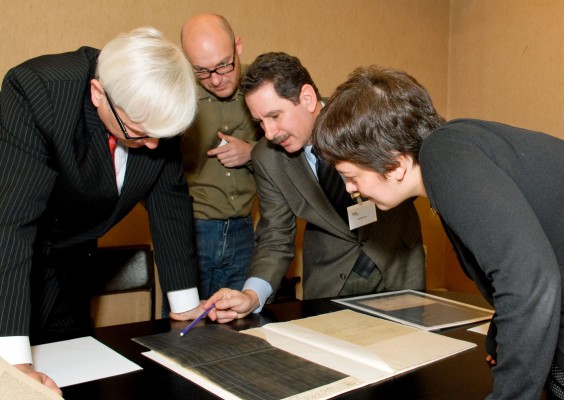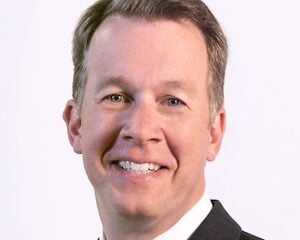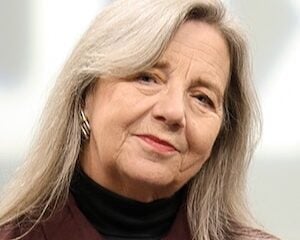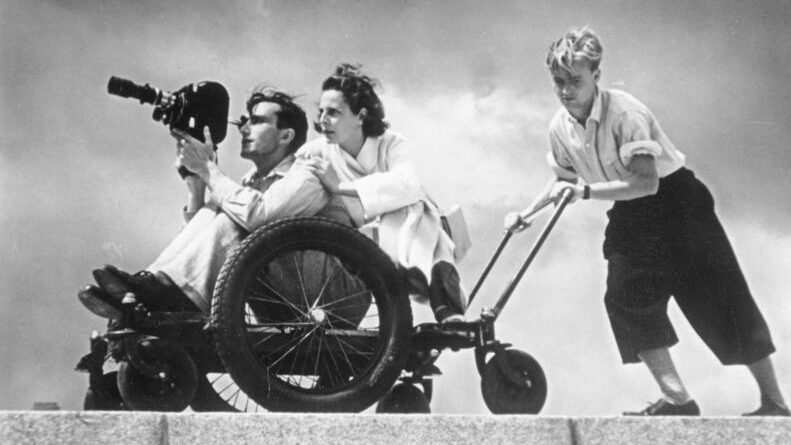After public broadcasting, David Giovannoni dives into audio’s long-lost past
Of the many ways to enjoy retirement, realizing a dream held since high school ranks as a pretty good way to go about it.

That’s what David Giovannoni has been up to since 2005, when he sold his company, Audience Research Analysis, and ended his career in public broadcasting. In his 30-plus years in the field, Giovannoni achieved an immense and sometimes controversial level of influence. By interpreting audience data in new ways to help station programmers understand what their listeners wanted to hear, he shaped the sound of public radio throughout the country.
While building this body of work, however, Giovannoni was nursing a passion in his off-hours: collecting antique phonographs and early sound recordings. Joining NPR in 1979 first supplied the extra income he needed to start collecting. Retiring from public radio finally afforded him the time to turn his hobby into a full-time pursuit.
Before long, he was making waves on a level comparable to his work in public media. He teamed up with Archeophone Records, a record label devoted to historic early recordings, on a CD reissue that drew on his library of rare recordings and won a Grammy Award.
Giovannoni then led a team in discovering a sound recording made in 1860, preceding Thomas Edison’s invention of the phonograph by almost 20 years. The public unveiling of the recording, made by French inventor Édouard-Léon Scott de Martinville, landed on the front page of the New York Times.
Giovannoni still brims with enthusiasm as he relates the story of tracking down the groundbreaking record, which contained a 10-second snippet of a voice singing the tune “Au Clair de la Lune.” He had first read of Scott’s recordings as a teenager, already fascinated with the history of sound recording.
“I said, ‘That would be kind of cool to play those back,’” Giovannoni says. “Who would have thought that I would be leading a team to actually do it?”
Sounds before Edison
Giovannoni shares this story at his home on a quiet street in suburban Derwood, Md., not far from the offices of his former company, Audience Research Analysis. One room showcases antique cylinder and disc phonographs. Shelves upon shelves of indexed 78 rpm records line basement walls.
His interest in records budded in childhood, and in high school he enjoyed learning about Thomas Edison and the invention of the phonograph. But Giovannoni is as a loss to explain the root of his obsession. “There’s something about the recording of sound and the preservation of sound that just resonates with me,” he says.
At first, Giovannoni focused on collecting phonographs, but he realized that for the price of a phonograph, he could buy a lot more records. By the time he sold ARA in 2005, he was ready to share his recordings with a wider audience.
Colleagues say that goal distinguishes Giovannoni from other collectors. “Dave just wants to see this material out there,” says Rich Martin, owner of Archeophone Records. “He wants to see people talking about it, enjoying it, and getting a deeper understanding of music, culture and history.”

The first collaboration between Giovannoni and Archeophone led to Lost Sounds: Blacks and the Birth of the Recording Industry, a collection of early recordings featuring African Americans, some dating from as early as 1891. The liner notes, co-authored by Giovannoni, received a Grammy nomination, and the set won a Grammy for Best Historical Album.
The success of Lost Sounds lent Giovannoni and Archeophone some helpful cachet when it came to their next project, Actionable Offenses. The CD collection brought to light a trove of indecent recordings from the 1890s that had been discovered at the Edison National Historic Site.
Giovannoni and his collaborators—Archeophone’s Martin and his wife and label co-owner Meagan Hennessey, and researcher Patrick Feaster—next set their sights even farther back in history. What were the very first audio recordings, and could they be found and shared with the world?
Historians already knew about Scott and his invention, the phonautograph, which converted airborne sound into a line etched onto a soot-blackened roll of paper. The paper was then preserved in alcohol. The resulting document, called a phonoautogram, was not intended to be played back, only looked at as a visual rendering of sound.
At the time, “nobody in the world believed that a small vibrating diaphragm could convey enough audible information to be interpreted as speech or music,” Giovannoni says. That realization came only with Edison’s invention of the phonograph. Scott’s phonautograph had preserved sounds. But no one had heard them—yet.
“All downhill from there”
On a visit to France in 2007, Giovannoni visited the country’s patent office to inspect its cache of documents related to Scott. He found a phonautogram from 1857, copies of which had already been circulated among audio historians. But he discovered a second example deposited by Scott in 1859.
Giovannoni also requested Scott’s documents from the French Academy of Sciences and in February 2009 received a CD by mail of previously unseen phonautograms. Using software developed by at the Lawrence Berkeley National Laboratory in Berkeley, Calif., scientists reconstructed the sounds preserved in phonautograms, thus revealing the snippet of “Au Clair de la Lune.”
Giovannoni’s partnership with Archeophone and Feaster, dubbed First Sounds, unveiled the recording in 2008 at a conference of the Association for Recorded Sound Collections at Stanford University.
“That redefined when recorded sounds started,” says Sam Brylawski, a consultant to the Library of Congress. Edison’s phonograph was previously cited as the first instance of sound recording, but Giovannoni’s discovery “put it back almost 20 years,” Brylawski says.
“Personally, it’s all downhill from there,” Giovannoni says, laughing. “What else are you gonna do?”
First Sounds has identified even earlier recordings, but the collaboration is on hold until more can be prepared for publication, Giovannoni says. Meanwhile, he continues to contribute his recordings to reissues, online databases and other collections.
His holdings include the largest private collection of the very first disc recordings, made by Berliner Gramophone in the late 1890s. Hundreds of these and other early recordings of Giovannoni’s helped to stock the Library of Congress’s National Jukebox, a digital archive of historical recordings, when it launched in 2011. The Library is continuing to cull from Giovannoni’s basement for the Jukebox.
His recordings also have appeared on PBS and BBC documentaries. And his collection also includes blues, jazz, and early rock and roll, including the 78s of Elvis Presley—music, Brylawski points out, that gets relatively little airplay on public radio.
“We note the irony of his work for public radio, which sort of shifted it away from recorded music. And he has such a strong commitment to music,” Brylawski says. “He’s making up for what public radio has less of these days.” Questions, comments, tips? mike@mikejanssen.net This article was first published in Current, July 22, 2013.






